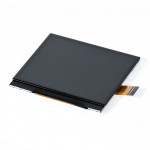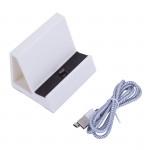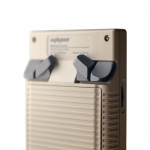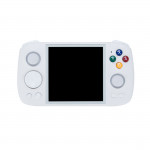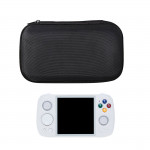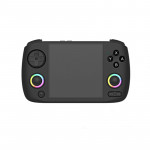Top 5 Retro Handhelds Under $50
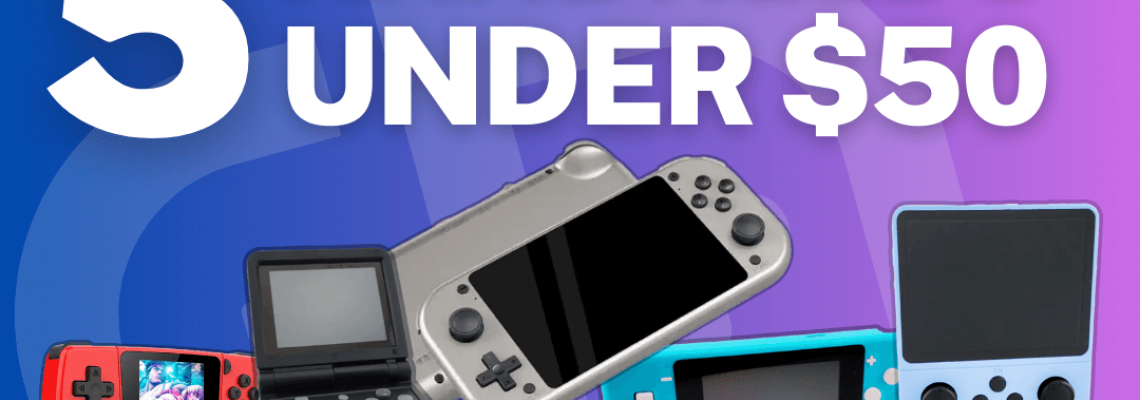
Top 5 Retro Handhelds Under $50
Fifty bucks. With that, you could purchase a lot. A copy of Pikmin 1+2, an 8BitDo SN30 Pro 2, or 25 Taco Bell Beefy Melt Burritos. However, you can play your Fire Emblem romhacks in a portable way and save money simultaneously. I have some excellent news if that's what you're after! I'm not an exception to the many "Top X under X" lists that accompany the holiday season. If you don't require a lot of power, check out the five handhelds under $50 that I've listed (subject to change).
A few disclaimers are generally attached to devices under fifty, but here are the top five worth considering in the autumn of 2025.
1. The M17
The M17, one of the more recent models available, is made by... well, someone. Although the M17 was only introduced a few months ago, its low cost, power potential, and overall size have attracted other people's attention. This beige brick's 4.3-inch, 480x272-inch display is powered by a Rockchip RK3126, 256 MB of RAM, and an admittedly little 1,500mAh battery. If that seems like a strange resolution, it's because it's precisely the same as the PSP screen. Unfortunately, it not only equals the resolution but also almost exactly matches the display quality of the PSPs (more precisely, the 2000).
You may quickly ascend to the PlayStation 1 thanks to the two sticks and stacked shoulders in terms of performance and use. After that, you encounter fewer supported libraries than earlier/easier-to-run systems. You're getting a modified version of Emuelec with the OS. When stock, it's a sound operating system, but when modified and altered by the person who made the M17, it becomes a little more awkward. This may not be the best choice for a novice, but with a little effort, you can come away with something usable by fiddling and messing with the operating system. Overall, it's not a bad pick at $35 to $40, but you could find other options more convenient until the software can be changed. This one is also available on Amazon. However, it costs more than $50—more like $70.
The top-tier X39 Pro is a moniker you may also see on devices referred to as pro but may not be worthy of it, instead of just the standard X39. For example, the AirPods Pro or any phone with the term "Pro" in it. Yes, this also fits into that similar category. This one has the largest screen on the list today—barely measuring 4.5 inches and having an 854 x 480 resolution. An ATM7051, 128 MB of RAM, and a 3,000 mAh battery (double the size of the previous option on this list) power that. The X39 Pro was recently released in a few colours, including transparent purple, which gives it the appearance of a miniature Ayn Odin. However, in black, the button layout resembles a PocketGo V2.
Regarding power and usage, this gadget should perform as well as the PlayStation 1, if not better. Although performance might be the primary cause of the poor compatibility, I might examine the software with the most significant warning that one frequently encounters for less than $50. The X39 Pro's operating system could be locked down compared to the other options on this list. RetroFE/Funkey OS (spoilers) or Powkiddy's "Linux" against Emuelec. With little internal customisation, this Linux operating system is simple and unattractive. On the plus side, though, what works works rather well. You may find this for between $40 and $45, depending on where you look, especially since Powkiddy frequently gives $5 off various devices at once. It has a nice appearance, a simple operating system, and a good experience. However, improved software might make this gadget a far better choice. Additionally, you can purchase an X39 Pro on Amazon, similar to the M17. However, it will cost more than $60.
3. Powkiddy V90 (or Q90… or Q20)
I will cheat. Here, just a tiny bit. My overall recommendation is for the Powkiddy "FC100S" family. The Allwinner FC100S chip and 32 MB of RAM are identical in the V90, Q90, and Q20. They vary in form factor, including screen size (2.4 or 2.8 inches), battery life, and whether you want a horizontal or clamshell design. The Q90 has a 1,500mAh (swappable) BP-4L battery, the V90 has a 1,020mAh Swappable BL-5C battery, and the Q20 has a 1,200mAh battery. Similarities between these and other devices that used the FC100S (including the Bittboy and the PocketGo) can be seen as a family tree. They did an excellent job of capturing the idea that all of these gadgets are designed to be portable and somewhat compact so that you can carry them with you wherever you go. In addition, they did a good job of capturing the scene with the custom firmware.
These gadgets had an advantage, which led to the creation of bespoke firmware. These projects can run MiyooCFW since they share a chip with the Bittboy devices listed above. Initially developed for Bittboy devices, the operating system was later ported to Powkiddy handhelds and has continued supporting these devices till the end of 2025. It's a suitable firmware! Performance is the source of the warning. You shouldn't have high expectations for these compared to the Gameboy Advance or Super Nintendo. Lower-end computers will function perfectly, but stuttering becomes more noticeable afterwards. However, their cheaper pricing is also made possible by the lower power. Depending on the store, they can cost anywhere from $30 to $40. Although I would personally choose the V90, all three will offer a respectable experience worth seeing.
Again, all three options are available on Amazon, but this time, the Q20 costs $43, the Q90 costs $45, and the V90 is presently $50—just under that fifty-dollar limit.
4. Powkiddy Q36
The Powkiddy Q36 is a tiny powerhouse made available in December 2021. We received gadgets such as the Analogue Pocket (announcement), the Retroid Pocket 2+, and the Anbernic RG552. In contrast to the Q36, these were considerably more extensive and costly gadgets. But even after nearly two years, the Q36 still has a place here due to its value, much like a few other gadgets from the era (namely the RP2+). With 64 MB of RAM and an Allwinner V3s processor, the Q36 powers up to a PlayStation 1 on its 1.54-inch, 240 x 240 square screen. Naturally, a 1,000mAh battery powers everything.
The software experience is one aspect that may not appeal to everyone despite the small size. With the help of RetroFE, the Q36 fully utilises the operating system design of the $75 Funkey S. You can quickly and easily access the games you desire with Funkey's Skin for RetroFE, which makes it an easy-to-use and visually pleasing operating system. The horizontal form makes it easier to handle and operate, especially for small devices. However, if you can overlook its diminutive size and square aspect ratio, the Powkiddy Q36 is an excellent purchase for $50 and will gladly play every Sonic Advance 2 game you want. Or perhaps Super Mario Land, which ultimately comes very near to having the same square aspect ratio as all of these smaller gadgets. Unlike earlier possibilities, the Q36 isn't available on Amazon right now, but you can't go wrong if you order straight from Powkiddy on Aliexpress.
5. The R35S
Last, the R35S was created by... well, I'm not entirely sure (yes, I previously made this joke). If you are familiar with handhelds, you would immediately exclaim, "HEY, WAIT, THIS IS A POWKIDDY RGB20S." You would also be partially correct. A clone of the RGB20S, the R35S is also less expensive than the original. This indicates that it has the venerable RK3326, 1GB of RAM, and a 3.5-inch, 640 x 480 screen that looks rather good. Of course, a 3500mAh battery powers everything else. One may advise getting the RGB20S if that were it, but that's not the case. In addition to being about $50 less expensive than the original, the R35S also boasts superior software support. In a sense, anyway. The R35S is placed on the ArkOS Page and changelog compared to the 20S. Even though it isn't as supported as other devices on that list, its acknowledgement speaks volumes about it.
Regarding the handheld, the shoulder buttons are pleasant to use, the d-pad and face buttons feel good (albeit slightly too low), and the switch sticks function well. Even though they are significantly louder than the shoulders of the RGB20S, in terms of performance, you'll be up to par with the PlayStation 1, though not entirely. Overall, the R35S is a fantastic handheld device with more official support for ArkOS. The fact that there are no tiger stickers included is the sole drawback. Sad.
That concludes my selection of handhelds under $50 that might be worth checking out. We're seeing many more high-end options join the market as 2025 draws close. Handhelds ranging from the Odin 2 to the Pimax Portal cost hundreds or thousands of dollars for a large enough fish. However, there are occasions when it's necessary to stand back and value the inexpensive gadgets. These aren't the best, and they can't play 8K games on the PlayStation 2. However, despite their shortcomings, these gadgets can offer a pleasant introduction to the market for individuals just starting. Hopefully, you or someone you know will find something they enjoy here, and a new handheld can find a home. You don't spend a few more dollars than $50 on a more potent item.


